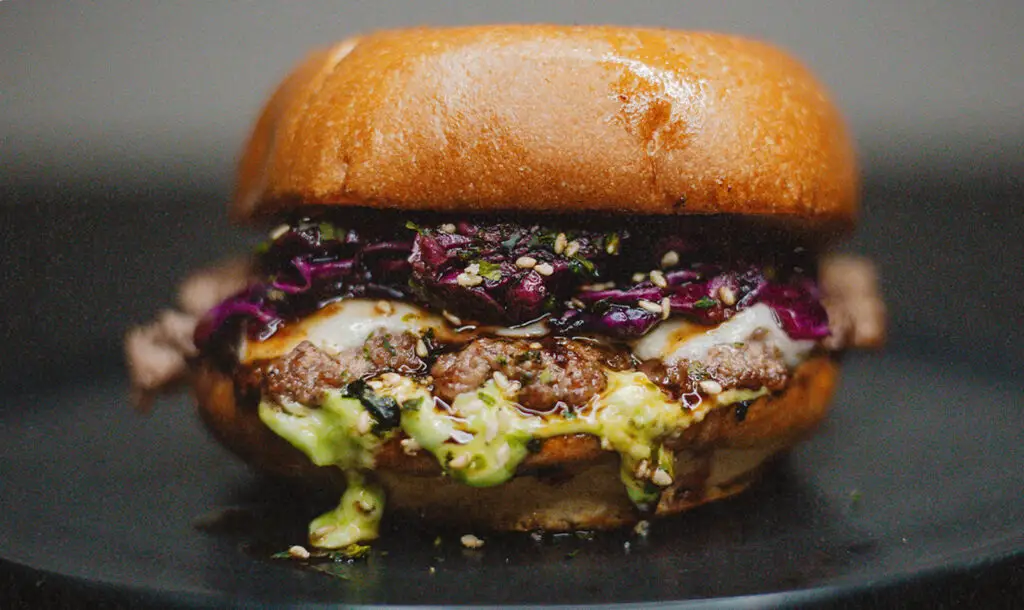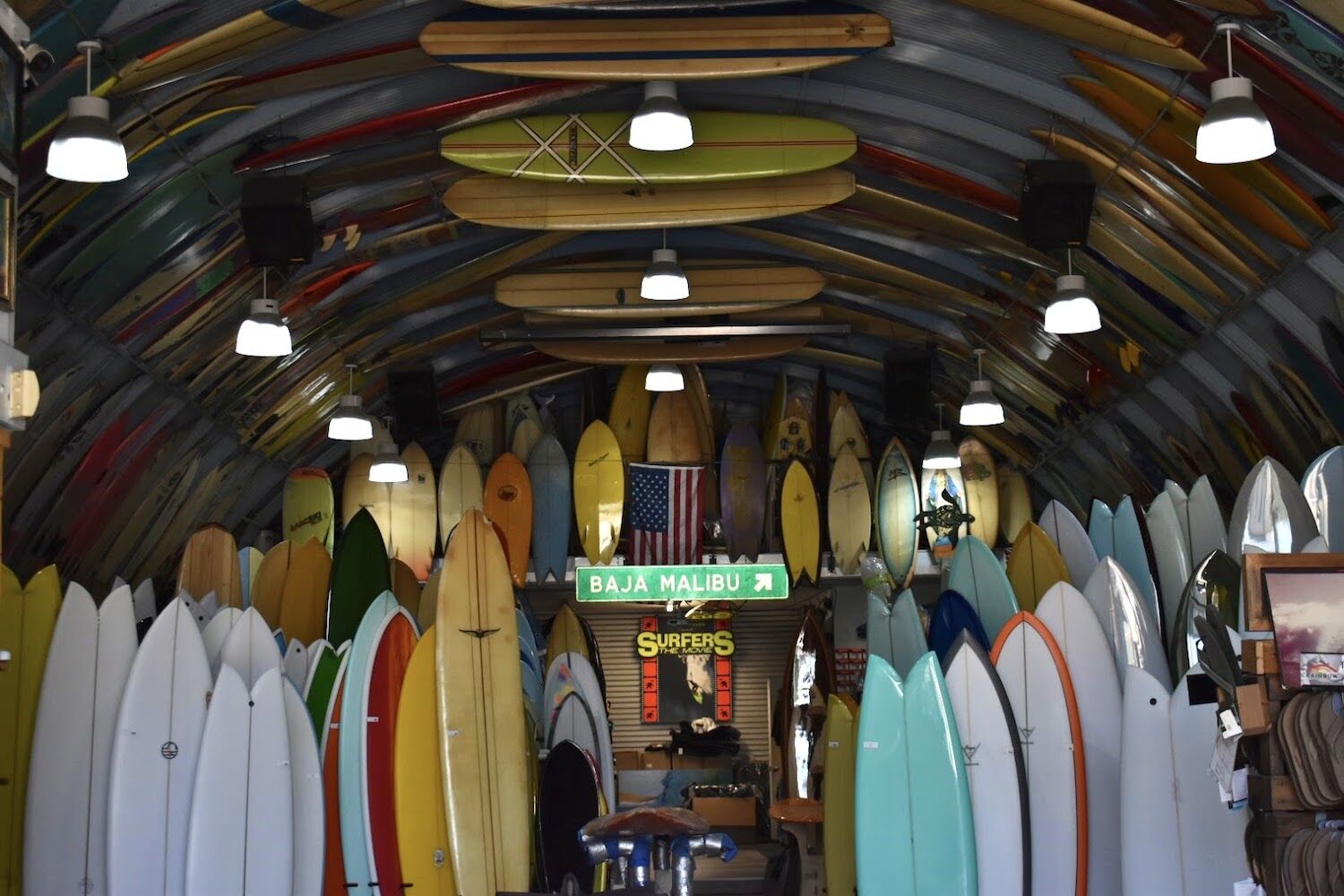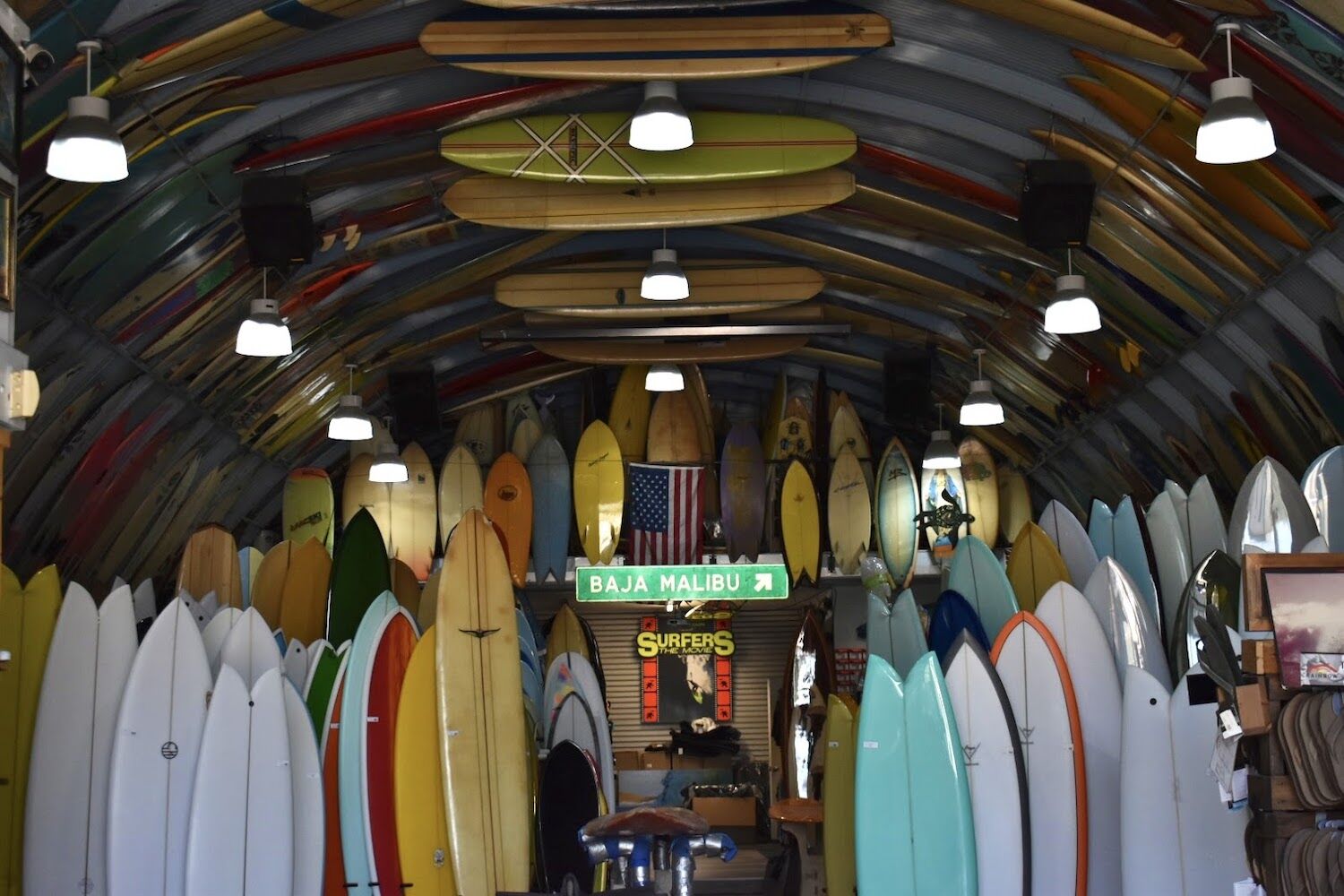
Bird’s Surf Shed
Photo Credit: Lili Kim
I was the kid who would always plug her nose jumping into lakes and wear floaties to pool parties. Don’t get me wrong, I loved the water. But I treated it somewhat like the neighbor’s dog who you can’t be sure is staring at you with love or vicious hunger.
Fast forward a decade: I’m rounding out my third year in San Diego and water has become my sweet escape. With summer officially beginning and June Gloom gone, I decided it was finally time to embrace one of the raddest and gnarliest parts of being a San Diegan: surfing.
Again, I was an arm floaties kid longer than I’d care to admit. The prospect of braving wild water pounding at unpredictable intervals onto a land surface was not a comforting thought.
Thanks to a generous surfer friend, I already had a board, so next on my list was a wetsuit. I visited multiple surf outlets and stores to try on size after size, brand after brand. Nothing fit, nothing felt right. Minutes away from throwing in the towel, I drove by a funky-looking warehouse off Morena Boulevard, near some warehouses and something called a Tio Leo’s at the base of the castle-like USD campus. Carved into a massive sheet of iron above the doors read: Bird’s Surf Shed.
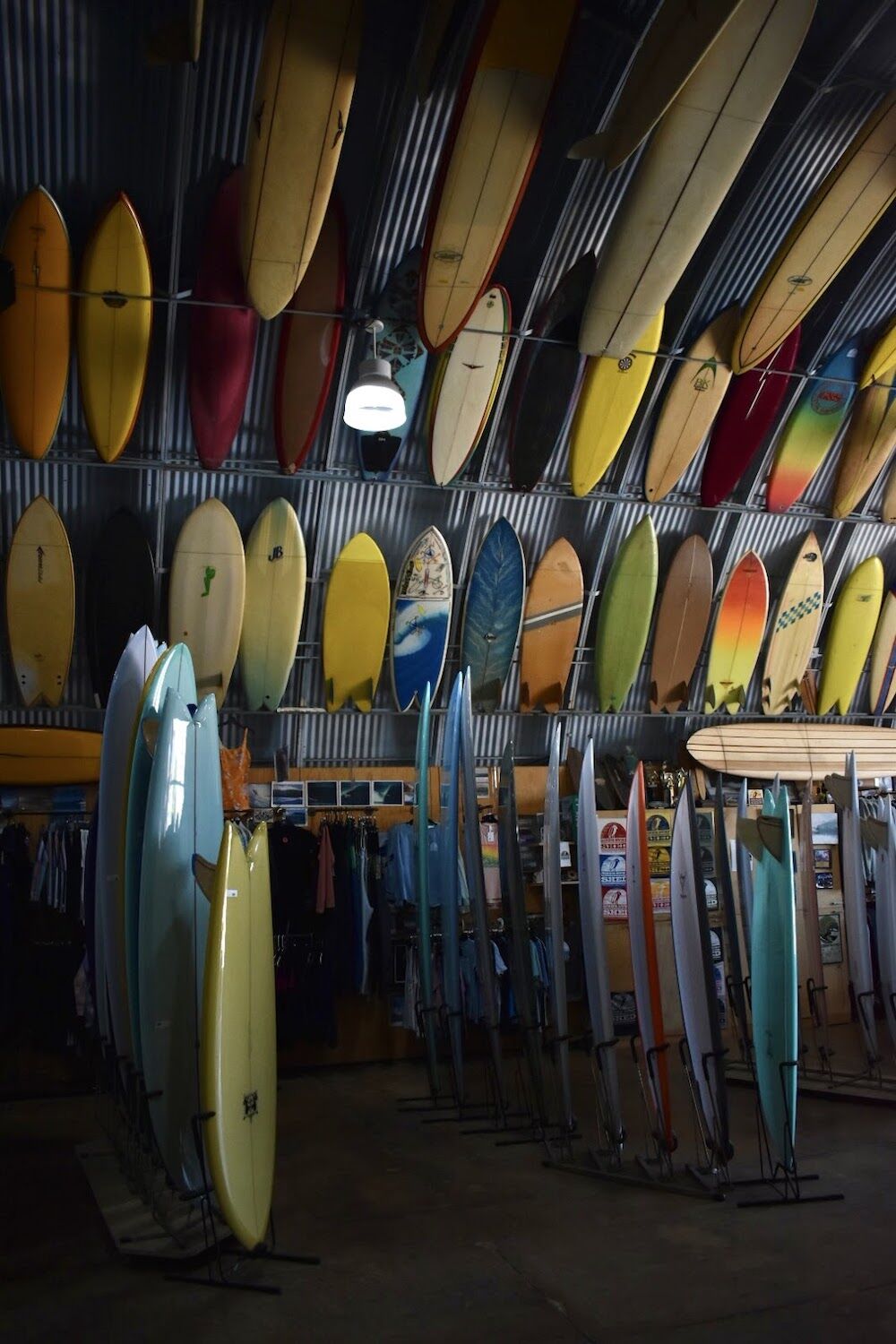
Bird’s Surf Shed
Photo Credit: Lili Kim
What’s one more shop, I thought.
Walking in felt like entering a sea cave, except instead of bats and stalagmites, it was covered in years of accumulated surfboards. The boards formed a fiberglass rainbow canopy, covering every inch of the walls and ceiling in sight. Wherever there wasn’t a surfboard instead stood a competition trophy or signed photograph of an 80s surfer dedicated “To Bird.” Before falling too deep into a trance, I was greeted by Francois, an employee of the shop who immediately brought me back to look at wetsuits. He told me to wait and without warning, yelled, “Bird! I need your thoughts on wetsuit sizing!”
I’d already begun mythologizing “Bird,” so getting to meet him in the flesh was startling. Eric “Bird” Huffman came out of the office to greet me with a smile. After no more than 10 seconds of looking at me, running some sort of surf math in his head, he recommended a specific brand, size, and thickness of wetsuit. It was a perfect fit. Wisdom or wizardry? I had to find out.
Bird is the textbook definition of a San Diego local. He has considered the beach “paradise” since the 1960s when his parents settled in Mission Hills. One of nine children, Bird used hand-me-downs from his older brothers to surf, including Styrofoam or wooden paipo boards. With no money for quality equipment and the determination only a 12-year-old can muster, Bird started volunteering for his next-door neighbor, Phil Castagnola, a renowned surfer who owned Select Surf Shop, the best in town.
“I absorbed everything, and I got to hang out with some of the best designers, artists, surfers, and musicians of the ’70s,” he recounts.Surf, smoke, sell, repeat.
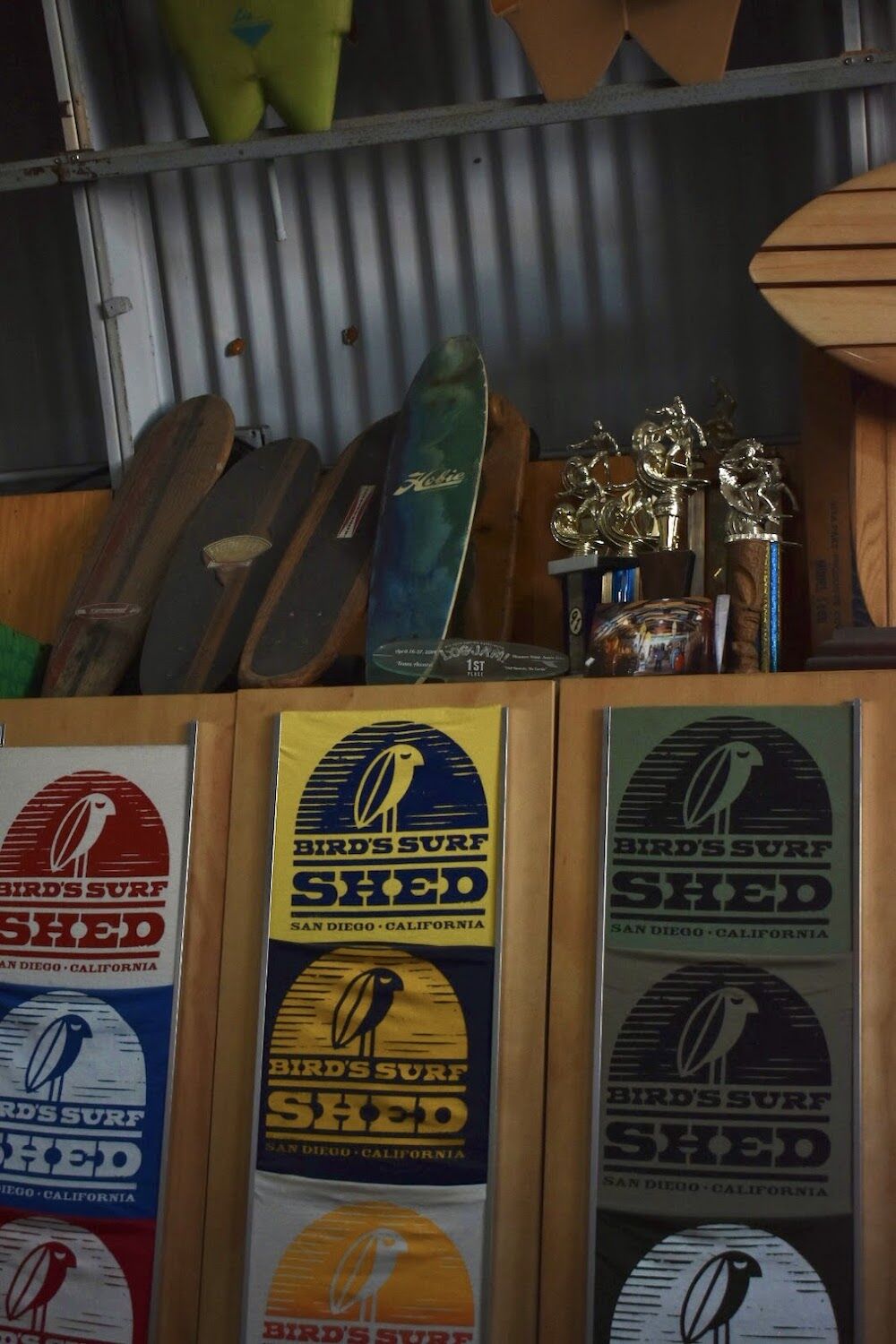
Bird’s Surf Shed
Photo Credit: Lili Kim
Bird has been an integral member of the surf industry since, jumping from employee to manager at shops around town, before finally opening Bird’s Surf Shed in 2011. “When it comes to surfing, there’s people who do it, and there’s people who live it,” he says. “It’s a living, breathing part of my existence, rather than an aspect of my life.” Bird opened his shop with a philosophy rooted in golden-age surfer values: simplicity and quality over glitz and glam.
“The Shed has everything a surfer needs, not necessarily everything a surfer wants.”
So if you’re looking for the trendiest Quiksilver gadget or newest Billabong line of swimsuits, you won’t find them at the Shed. What you find is over a thousand surfboards and a staff rich with knowledge about surf culture, history, and equipment. There’s a purity that may at times run contrary to sound, economic decision-making. “We need to make the sale, but we don’t have to make the sale,” Bird explains. It’s gotta be right or it doesn’t gotta be.
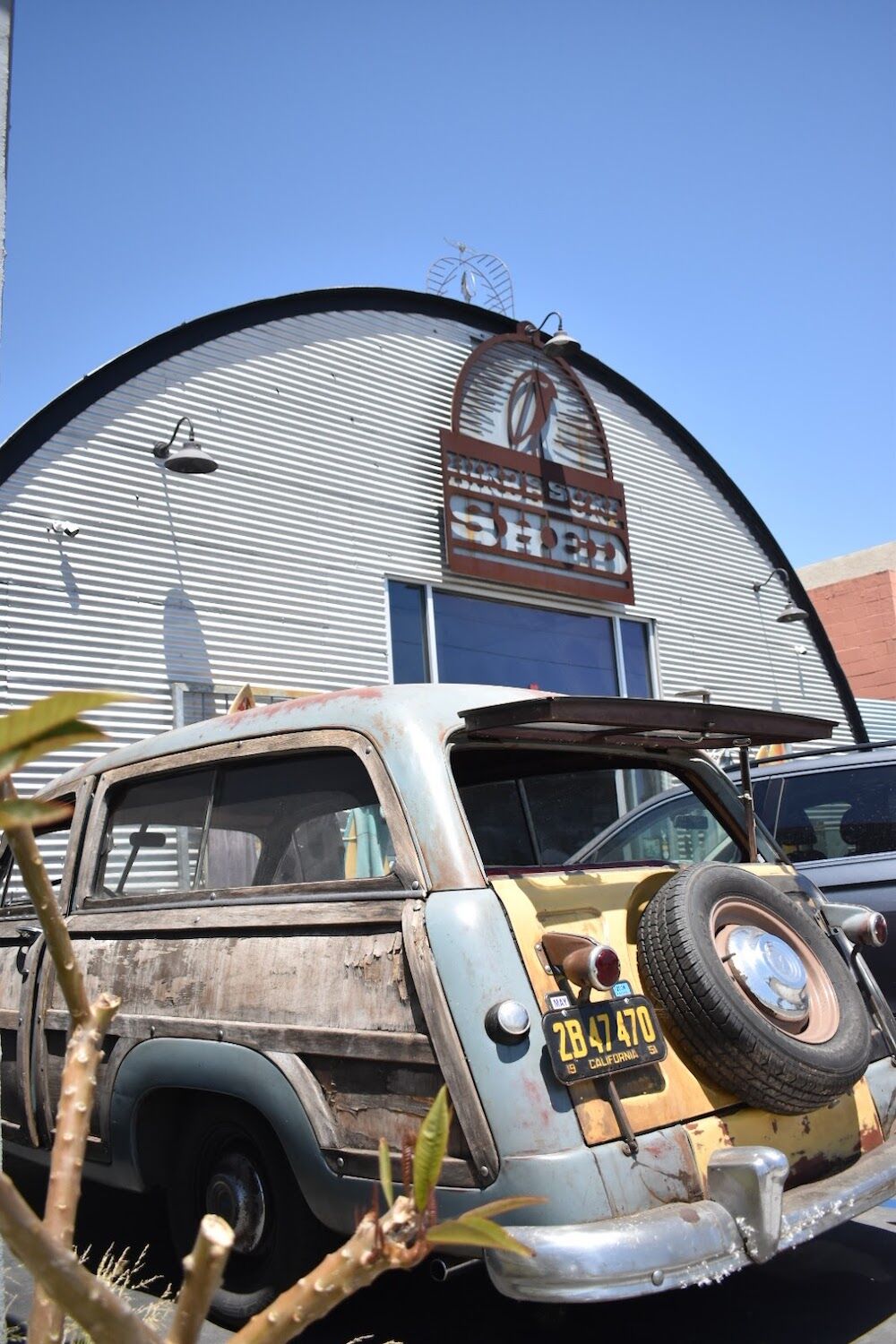
Bird’s Surf Shed
Photo Credit: Lili Kim
Each surfer is different, so if Bird doesn’t have your perfect board in the shop, he often appraises boards from other places.“San Diego in general is one of the premier areas for surfboard design and innovation,” Bird explains. “Plus, the wave source is better than Surf City. In LA, you don’t have Black’s deep water sandbar barreling wave, you don’t have Bird Rock or La Jolla reef or Sunset Cliffs. Down here, you’ve got it all.”
While I wish I could have nodded my head and agreed with Bird that reef breaks are obviously superior to beach breaks, I have yet to catch a single wave. Assuming (correctly) that I was a newbie, Bird-the-shop-owner morphed into Bird-the-instructor. Before I knew it, he was on the floor, showing me his technique to pop up and how to cut through waves on long boards. By the grace of the surfer gods, he didn’t make me drop down next to him and demonstrate my skills (or lack thereof). I instead sat and absorbed more than 50 years of surfing expertise, secrets, and tips. Here are the tips that stuck:
10 Beginner Surfer Tips
1. There’s no such thing as a beginner’s board, but there are boards that are better for learning on (anything round, wide and full will give you enough stability and maneuverability).
2. Surf the board for the conditions it was designed for. Flatter boards are better for smaller waves whereas boards with more rocker (or curve) perform better in steeper waves.
3. Don’t abandon your board just because you have a leash. Hold onto that thing for dear life. Abandoned surfboards are like couches in the middle of the freeway.
4. To pop-up, instead of pushing up and jumping to your feet, try holding onto the rail, planting your back foot, and sliding your front one up the board. Three points of stability.
5. When a big wave comes, you can’t duck dive with a foam board. Hold onto the front of the nose, curl up into a ball to decrease your body mass, and flip the board sideways on its rail to cut through the wave.
6. Don’t be a kook and drop in on someone else’s wave. Respect the lineup and right of way.
7. Practice some pop ups before you get out on the water.
8. Learn to surf from the inside out. Go out waist high and surf the white-water waves before trying to pass the breaks.
9. Don’t paddle with very long strokes or your board will zig zag. Aim for short, powerful strokes.
10. Watch how the waves are breaking. Watch the better surfers and see what they’re doing. Feel the currents.
Bonus tip: If surfing is something you’ve been wanting to try, the summer waves are an ideal backdrop. If you ski, think of small summer swells as a bunny hill. This post contains affiliate links to products and services. We may receive compensation when you click on links.

